Iconic Endemic Birds Of New Zealand
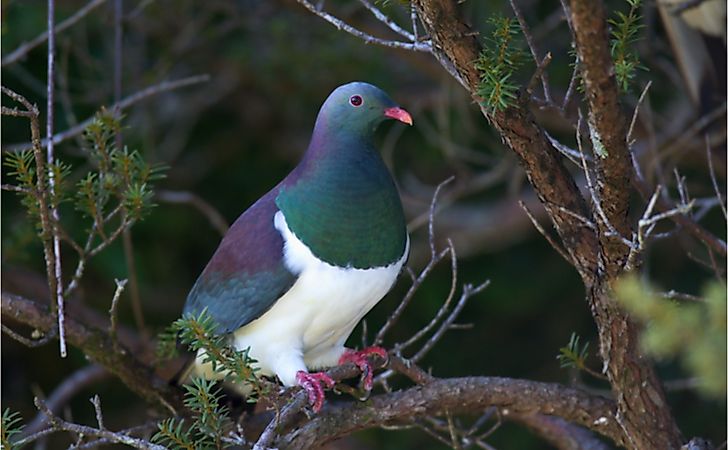
New Zealand is an island country that consists of two main islands (the South Island and the North Island) and numerous other small islands. The South Island is the largest, and its landscape consists of the Southern Alps (which include Mount Cook), plains to the east, and rough coastlines to the west. The North Island is less mountainous, and its main features include a lake and an active volcano. The islands have remained separated from other landmasses for nearly 65 million years. In that period, the region developed some of the most distinct wildlife in the world. The country currently has over 170 bird species, including many endemic species, and only two native mammal species, both of which are bats. Thus, it is no wonder that New Zealand is called the land of the birds. Bird species in the country are highly specialized due to their isolation in the course of evolution. Lack of predators meant that birds such as the Kiwi and Kakapo evolved into flightless birds. In many ways, New Zealand was a bird haven. The situation changed with the arrival of humans who introduced rats, dogs, mustelids, and cats that brought a significant number of bird species to extinction. Their habitat was also affected considerably as humans, over time, cleared the once forest-covered land to make way for agricultural land and settlements. Today only 20% of the area is covered by forest.
Kiwi
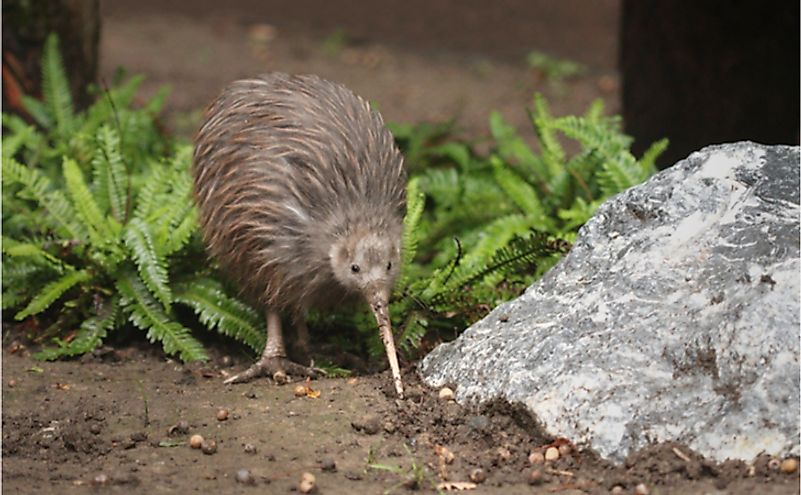
The kiwi is the country’s most iconic bird. Citizens of the country informally call themselves kiwis. The bird’s name is a Maori word derived from the shrill call made by the male kiwis. The kiwis have several unique characteristics; they are flightless, nocturnal, and have nostrils at the tip of their long beaks (technically the shortest beaks in the world as beaks are typically measured from tip to nostril). Female kiwis lay the largest eggs in proportion to their body size of any bird species. Kiwis are mainly found in forests. They sleep during the day in burrows and come out at night to forage for food, which includes insects, worms, larvae, and berries. The birds can run swiftly and use their claws for self-defense. Females lay one to two large eggs that are incubated for 80 days by the males. Chicks hatch fully feathered and with open eyes but do not feed for about a week.
Takahe
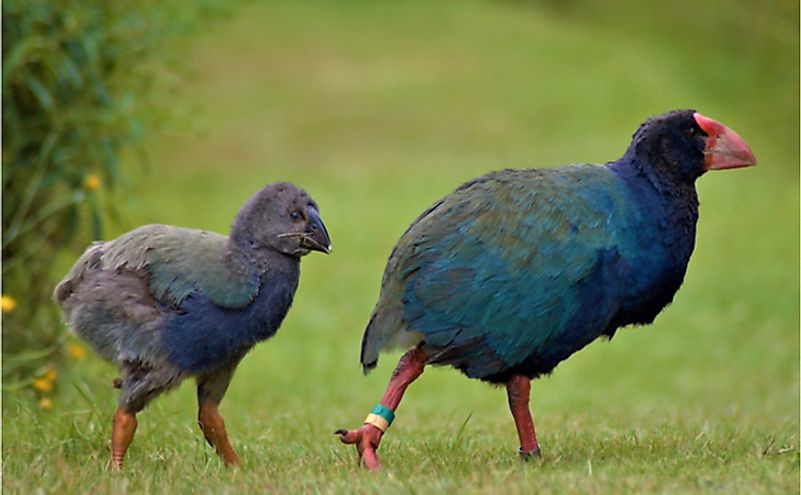
Takahe is a rare and large flightless bird. It is the largest in the rail-bird family. The bird is also known as the South Island takahe to differentiate it from the North Island takahe, which is extinct. The species has copper-green, brilliant blue plumage, and a large reddish bill that is attached to a red frontal shield on its forehead. The birds mainly feed on snow tussock, a species of alpine grass, and nest on the ground. The takahe was declared extinct in 1898, but after careful searches, the species was rediscovered in 1948 in Fiordland's Murchison Mountains.
Whio
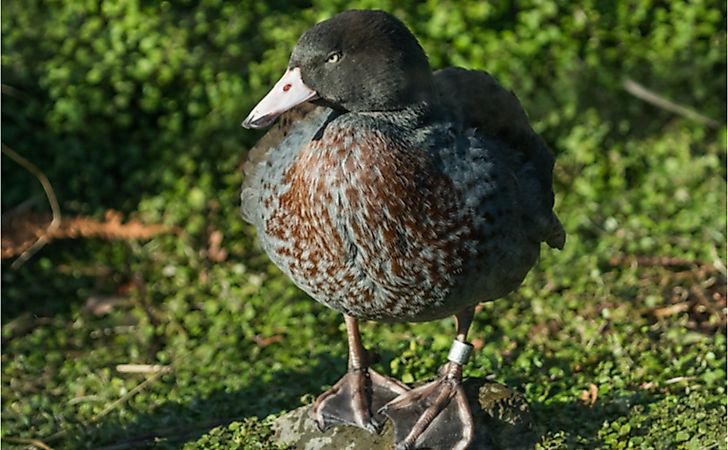
The whio, also known as the blue duck, is a rare and endangered duck found in North Island and the South Island where it is natively known as the ko whio whio. Its name is a Maori word that depicts the call that is made by the males. The birds are regarded highly in the Maori spiritual and cultural life. The bird is also featured on the New Zealand $10 note. The whio has a blue-grey shade with a speckled chestnut breast. They live on fast-flowing streams in the upper catchment areas where water quality is good, sediment loads are low, and forests offer canopy cover. They feed mainly on aquatic invertebrates found in clean rivers.
Kereru
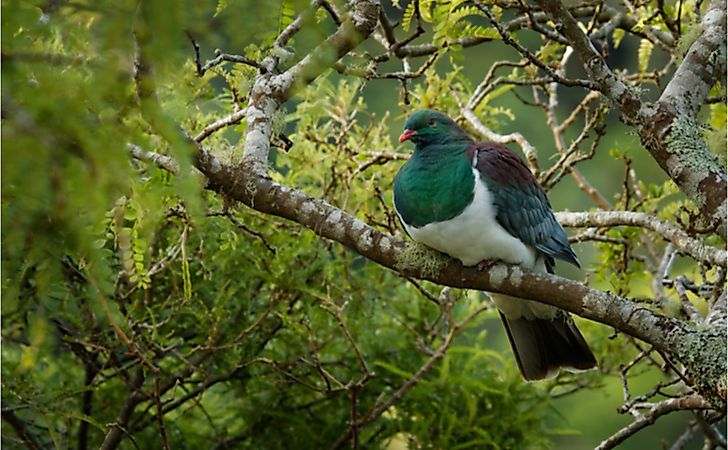
The kereru, also known as the New Zealand pigeon, is a large bird that measures 20 inches in length and weighs about 1.39 pounds. The birds have beautiful white and blue-green plumage and are often heard before they are seen due to the distinctive noise they make with the beating of their wings. They feed mainly on large berries, which makes them essential seed dispersal agents in the ecosystem.
Kakapo
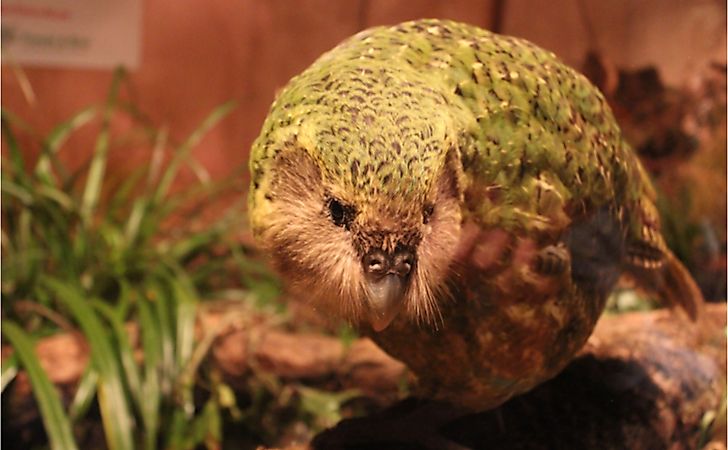
The kakapo is a flightless bird that is critically endangered and a focus of significant conservation efforts. The species is sometimes termed as the “world’s fattest parrot.” Kakapo has a blotched green-yellow plumage, large grey beak, short legs, and relatively short wings. They are nocturnal and are among the longest-living birds in the world. Before the arrival of humans, the species was found throughout New Zealand, but mammals introduced by humans brought it to near extinction. By the mid-1990s, there were only about 50 birds. The survivors were later transferred to predator-free islands. With intensive human intervention, they have gradually begun to increase in numbers. There are currently about 142 adults and 72 chicks.
Want to know more about the charismatic kakapo? Read here.
Hihi
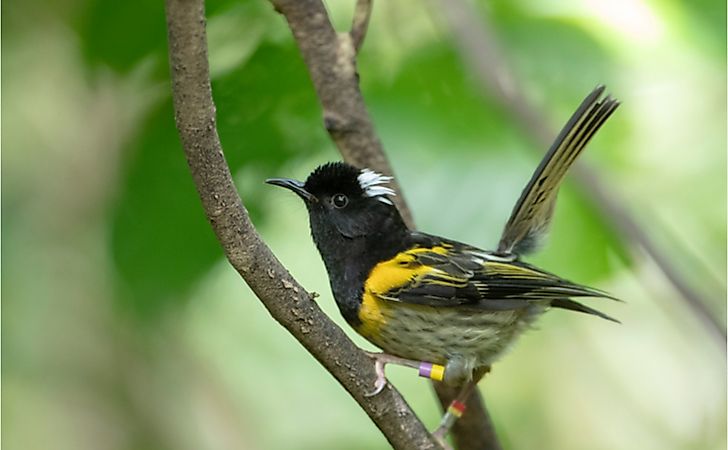
The hihi or stitch birds are medium-sized songbirds that have a distinct bold white wing bar and wren-like cocked tail. Males have a blackhead, a yellow neck, and a greyish-brown body. Females, on the other hand, are mainly greyish-brown. The species initially occurred throughout the North Island and its adjacent islands. After human settlement, the hihi population plummeted due to the introduction of invasive species. The bird was wiped out of all other islands except Little Barrier Island from were conservationists are gradually reintroducing them to other island sanctuaries.
Conservation Of New Zealand's Birds
Conservation efforts of the birds in the country are quite commendable as many bird species have been saved from the brink of extinction. Conservation is carried out by both government organizations such as the Department of Conservation and volunteer groups. Currently, nearly 30% of the country’s land has been set aside for reserves, national parks, and heritage sites to preserve the nation’s unique ecological heritage. Tourism operators are also involved in environmental programs to enhance native wetlands and forests and eradicate unwanted pests. The country also uses several intervention strategies that include, hand-rearing of species such as the takahe and the transfer of species such as the kakapo and the saddleback to off-shore predator-free island sanctuaries.











